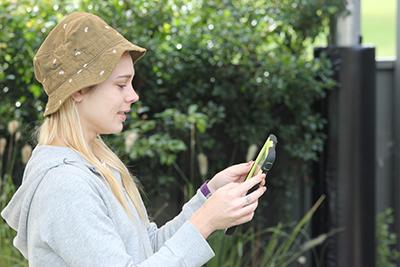Digital technology in educational program and practice
- Home
- Latest news
- We hear you
- Digital technology in educational program and practice

Most educators use digital technology in some form to document and share children’s learning and development, and to communicate with families and other stakeholders. The widespread use of digital technology in documentation offers educators many opportunities and potential efficiencies, but may also raise questions about the impact of device use on meaningful interactions, children’s rights and concerns about children’s and young people’s safety.
The beginning of the calendar year provides an opportunity to reflect on documentation more broadly and, in particular, digital documentation. We often hear from teachers and educators that they feel pressure to meet expectations of others, resulting in a focus on capturing large amounts of imagery or content on a regular basis.
Individually and in your service team, it may be useful to reflect on and discuss questions such as:
- What are the regulatory and quality requirements for documentation?
- What is the intent and purpose of your service’s policy about documentation? Does it assist in supporting children’s learning and development?
- How will capturing the image or video benefit and/or change educational outcomes for children in that moment?
- Is regular device use leading to interruption of play and meaningful engagements? Is it a distraction and leading to missed learning opportunities for children?
- Is the use of devices impacting interactions and relationship-building between educators and children, and between children?
It is also helpful to consider what this might look like from the perspective of a child or group of children. It may be worthwhile to get down on a child’s level, actively listen and closely observe what children see, hear and say throughout the day.
As well as being clear about the use of digital technology in promoting positive outcomes for children, it is also important to reflect on and discuss how your current policies around digital documentation:
- respect children’s right to privacy
- promote collaboration between educators and children, and
- support children’s agency and autonomy.
Additionally, online environments may pose risks to children’s safety and wellbeing. Online safety risks that services should consider when using digital technology in documentation include risks of harm to children from the misuse and/or breaches of content and data. The Checklist for online safety, developed to support the implementation of the National Principles for Child Safe Organisations, will assist service leaders and educators to identify potential risks and aspects of online safety to inform policy, program and practice decisions to safeguard children and young people.
The Education and Care Services National Law (National Law) requires providers to ensure that every reasonable precaution is taken to protect children from harm and from any hazard likely to cause injury (Section 167).
Principle 8 of the National Principles for Child Safe Organisations recognises the importance of safe physical and online environments to promote the safety and wellbeing of all children and young people. This principle is addressed within the changes to the National Law and National Regulations, which commenced on 1 October 2023 (1 December 2023 in Western Australia).
Embedding the National Child Safe Principles, approved providers must now ensure that policies and procedures are in place for providing a child safe environment including matters relating to the promotion of a culture of child safety and wellbeing, and the safe use of online environments.
Things to consider when reflecting on your service’s child safe environment practices, policies and procedures include:
- What risk assessments and action plans are in place that identify potential risks and hazards within the online environment and minimise any risks, without compromising a child’s right to privacy, access to information, social connections and learning opportunities?
- How does your service ensure all educators and staff, including students and volunteers, are aware of and understand the policies and procedures and use of digital technologies in documentation?
Helpful information and resources
- ACECQA – Information sheet: Embedding the National Child Safe Principles
- ACECQA – Policy and procedure guideline: Interactions with children
- ACECQA – Policy and procedure guideline: Providing a child safe environment